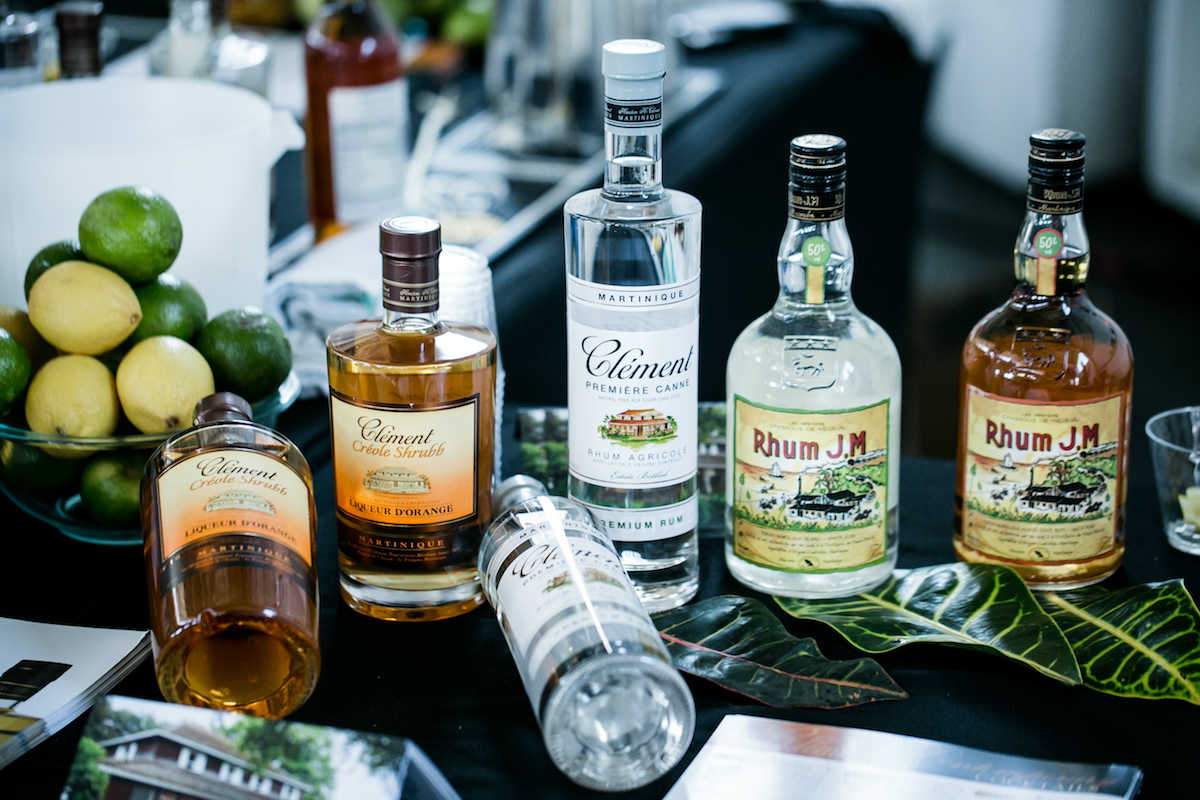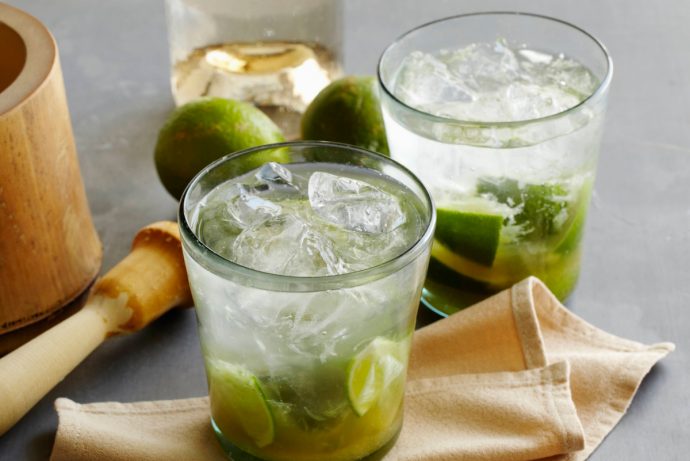There comes a point in your rum journey where you’ve ditched the water-wings and jumped into the deep end, exploring rums beyond what you find on your local supermarket shelf. Inevitably, you’ll internalize that it makes a huge difference if a rum is made from cane juice rather than molasses. The “Aha!” moment soon follows when you realize that both rhum agricole from the French Caribbean island and cachaça from Brazil are both made from cane juice, and that they taste pretty similar—at least in their unaged “silver” versions.
So what’s the deal? Is one just a fancy name for the other? It’s easy to think so, but the answer is more complicated than it seems. Pull up a chair, pour yourself a glass of something good, and let’s dig deeper into the cane arts.
The Origins
Historically, the first Brazilian cachaça predates rhum agricole from the French islands of Martinique and Guadeloupe by at least 200 years. Although cachaça production was getting underway in the early 1600s, the French islands weren’t making much in the way of cane juice-based rhums until the late 1800s. (Molasses-based rhum was being made on the French islands much earlier, however. The story involves a historical twist involving Napoleon that transitioned the islands to cane juice-based rhum, but that’s a tale for another time.)
Today, Martinique’s rhum agricole is considered among the finest in the world. In fact, Martinique created a geographical indication (in French: “Appellation d’Origine Contrôlée,” or AOC) to protect its good name. The Martinique AOC dictates very precise rules concerning how rhum labeled as Martinique Rhum Agricole must be made, and these rules are frequently cited as a counter-example when people say rum has no rules. It’s far less known that Brazil also has a geographical indication, and rules that must be followed to label the spirit as cachaça.
First and foremost, both the Martinique AOC and Brazil’s cachaça regulations state that the spirits must be made in their respective locales. This isn’t surprising and doesn’t offer much use in how they differ. However, other parts of their regulations lay out production styles and help highlight why they’re so different.

Rhum Clement and Rhum JM, two popular brands of rhum agricole.
Distillation
Martinique’s AOC dictates that rhum made there must be distilled in column stills. In contrast, cachaça can be distilled in either pot or column stills. Mass-market industrial cachaça is usually made in column stills, whereas traditional, artisanal cachaça (including brands like Avua and Novo Fogo) is typically made in a pot still. The choice of pot vs. column distillation makes a big difference in the flavor of the distillate. Generally speaking, pot distillate is heavier and more flavorful, whereas column distillate is lighter and more “clean.” To further illustrate this point, consider bourbon and single malt scotch. Bourbon is typically column distilled, whereas single malt scotch is pot distilled—and the two spirits exhibit wide taste variations, though they’re both whiskey.
Another key difference between cachaça and rhum agricole is how intensely they’re distilled. Cachaça can only be distilled once, and it must be distilled to final proof—no second distillation is allowed. Artisanal cachaça is typically pot distilled very slowly to enhance separation of desirable and undesirable components, and the final alcohol-by-volume (ABV) must be between 38 and 54 percent. In contrast, rhum agricole is column distilled and must be between 65 and 75 percent ABV. Guadeloupe is not subject to the AOC regulations, so some distillers on that island go as high as 85 percent ABV. In general, the higher proof you distill a spirit to, the more flavor compounds are removed.

Cachaça barrels at the Ypióca Distillery in Brazil.
Aging
While unaged cachaça and rum agricole may taste somewhat similar to the beginner, it’s their aged counterparts that really illustrate their stark differences. Rhum agricole is usually aged in American or French oak. Oak is the lingua franca of spirits aging. On the other hand, Brazil’s forests are a wonderland of exotic hardwoods, some rarely found outside that country. Cachaça makers aren’t shy about using these unusual woods, which impart extremely unique and intense flavor notes you’ve likely never experienced elsewhere.
Tasting an Amburana wood-aged cachaça, for example, makes it perfectly clear you’re a long way from the smooth, vanilla flavors of oak. Amburana brings intense cinnamon and spice notes to the spirit, making it eminently mixable in cocktails. Other hardwoods commonly used include jequitibá and bálsamo. Slowly but surely, these hardwood-specific varietals are making their way outside of Brazil.
Finally, there’s duration of aging. Most hardwood casks aren’t toasted or charred, so they impart a lot of flavor quickly. It’s rare to find a cachaça aged for more than three or four years, whereas some rhum agricoles are aged for upwards of 10 or 15 years.
A metaphor I find useful is that rhum agricole is like classical music: mature, refined, and rarely going outside of well-worn norms. In contrast, cachaça is like a rock band: young, brash, and wearing many costumes—the latter being those unique flavor profiles induced by different types of wood aging.
Both rhum agricole and cachaça are immense categories with many layers to explore. It would be a mistake to own just a bottle or two of each and think you’ve got the category covered. Aspiring rum/rhum enthusiasts would be well served to try as many aged and unaged varieties as you can, see what suits your fancy, and drill deeper from there.




Just a quick heads up: by law cachaça must be between 38 and 48% alcohol by volume. This part of the law is ambiguous as it doesn’t clarify if its on distilling or just bottling strength. And we cant comercialize anything above 52% ABV in Brazil
Why doesn’t the big difference in ABV make more difference in comparing the two?
Reading between the lines, I think you’re assuming that cachaca and rhum agricole are bottled at very different strengths, i.e. what they’re distilled to.
While agricole is distilled to between 65% and 75% ABV, it’s usually proofed down to the 40% -50% ABV range for bottling, which puts in nearly in line with the typical cachaca.
Indeed, guilty of assuming that. Thanks for clarifying.